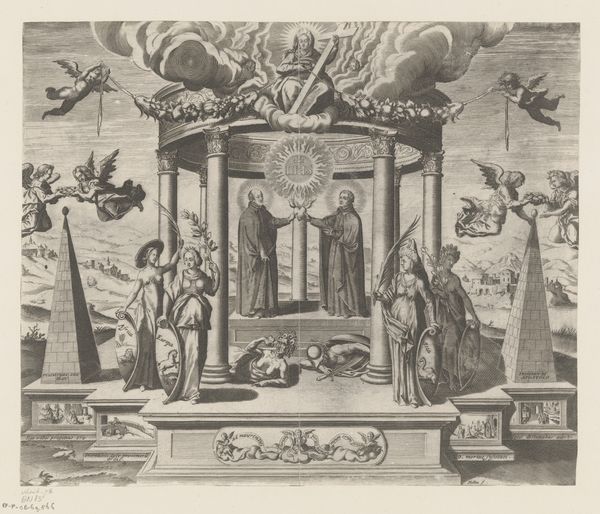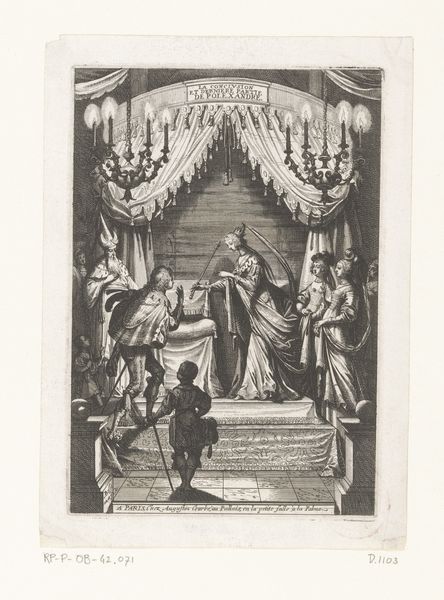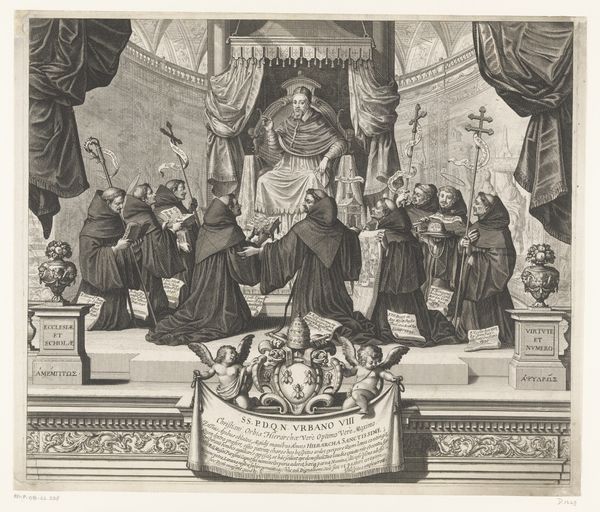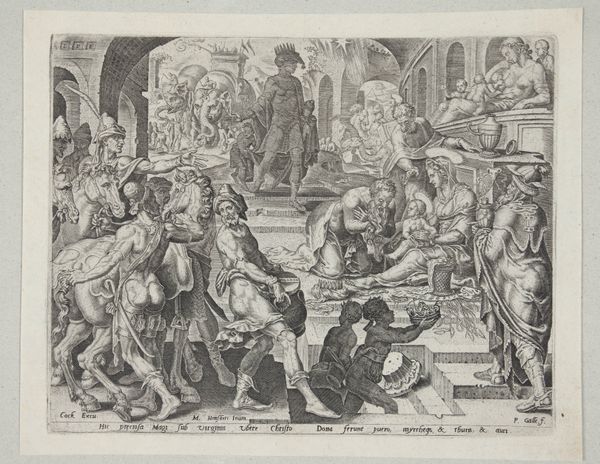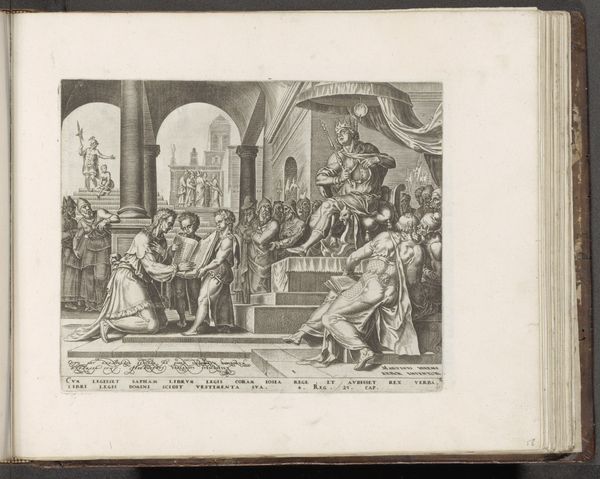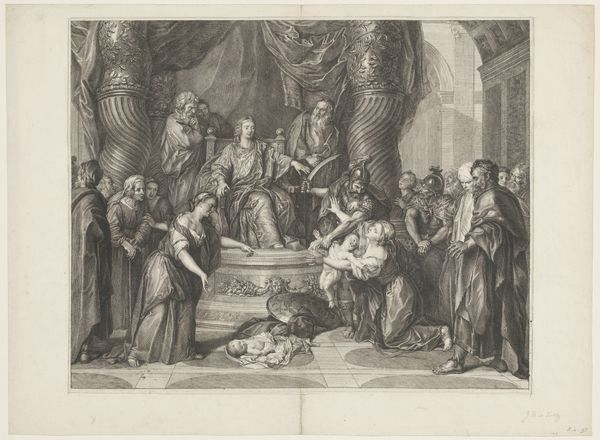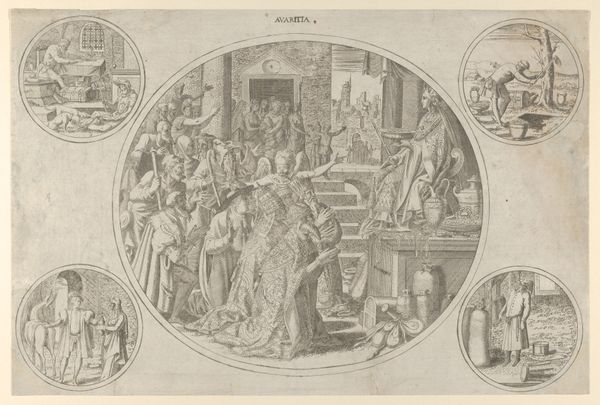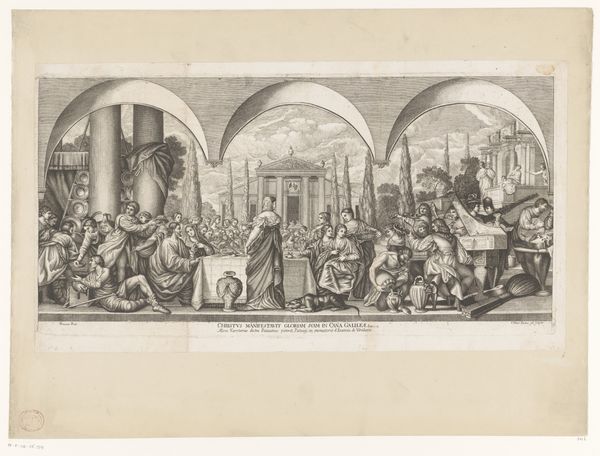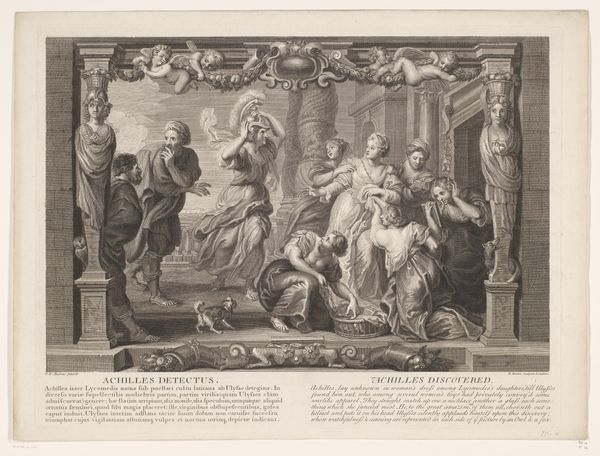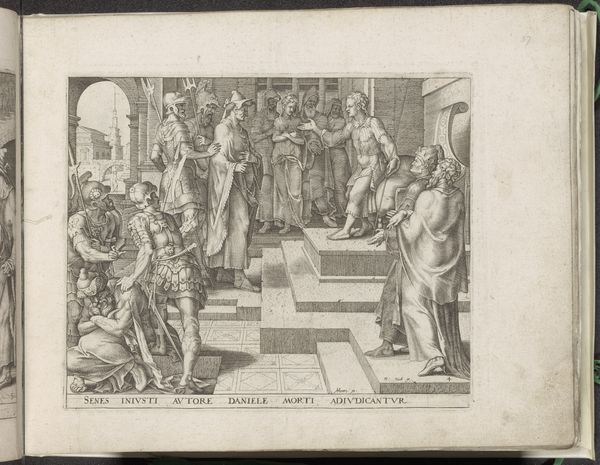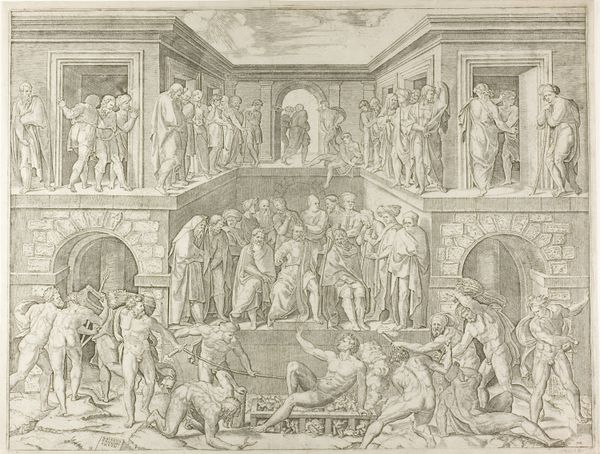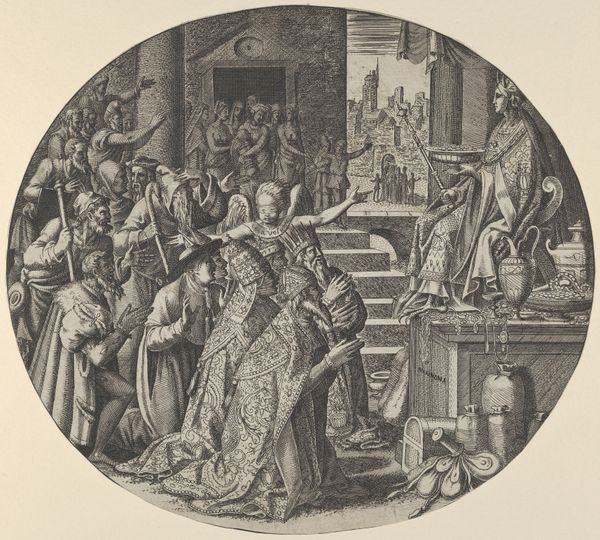
"The School of Legislation" in Lincoln's-Inn Hall, from "Illustrated London News" 1860
0:00
0:00
drawing, print, engraving
#
drawing
# print
#
sculpture
#
charcoal drawing
#
figuration
#
19th century
#
men
#
history-painting
#
academic-art
#
engraving
#
pencil art
Dimensions: Sheet: 9 5/8 × 11 7/8 in. (24.5 × 30.2 cm)
Copyright: Public Domain
Editor: Here we have George Frederic Watts' "The School of Legislation" from 1860, a print of a drawing. It's dense, full of figures in classical robes. I'm immediately struck by how…staged it all feels. Everyone seems carefully posed. What do you make of this arrangement, particularly in the context of its title? Curator: Indeed, it's quite deliberate, isn't it? Watts seems to be reaching for a specific symbolic language. Think about the visual weight he gives to certain figures, their placement, their gestures. What historical figures or archetypes do you think he’s channeling? Editor: I see a few who seem to be scribes, but some wear crowns or mitres. Is he referencing specific lawmakers through time? Curator: Perhaps, but I think it’s broader. Consider what "legislation" represents—order, authority, tradition. Look at the architecture framing the scene. Do those arches and the high vantage point remind you of anything? What symbolic meaning is attached to placing these lawgivers within that sort of architecture? Editor: It does remind me of church architecture. Maybe he’s equating the law with religious doctrine, as a source of societal rules? Curator: Precisely. Law becomes almost sacred, doesn't it? It also invites us to consider how Watts viewed the legacy of law-making. Is he glorifying it, critiquing it, or something in between? Look closer - some appear thoughtful, some indifferent, some engaged. The symbols might show continuity, but each figure expresses diverse meanings and intention. Editor: So it’s not a straightforward celebration, then. There are nuances and ambiguities within this grand composition. The way he portrays different reactions to the presented ideas... it creates tension. Curator: Exactly. It demonstrates cultural memory through visual symbols. The longer we look, the more complex it becomes. It makes you wonder, doesn’t it, about our relationship with the laws that govern us, even today? Editor: Definitely. Seeing these visual symbols now helps connect our current moment to those of the past.
Comments
No comments
Be the first to comment and join the conversation on the ultimate creative platform.
